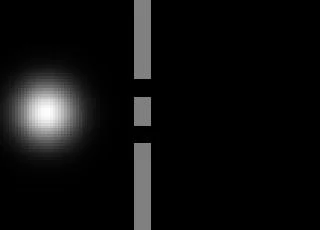 Double-slit experiment image source: Wikipedia
Double-slit experiment image source: Wikipedia
The double-slit experiment can be regarded as a demonstration that light and matter can display characteristics of both classically defined waves and particles. It also displays the fundamentally probabilistic nature of quantum mechanical phenomena.
In a double-slit experiment using an electron beam an interference pattern is formed after experimenters record a large amount of electron detections.
I have seen this answer by "anna v" which states an electron never travels through both slits only one slit per electron and the pattern formed is only a statistical probability distribution for the entire accumulation.
But assuming in an experiment in which electrons travel one after the other and each electron travels only through one slit then how could the pattern on the screen be different from the one when we close one slit interchangeably and send electrons only through one slit at a time. (Actual experiments have shown patterns are different indeed)
I think an electron through double-slit as a superposition of probabilities of spatial distribution. Like this picture below:
But according to anna v picture that come to my mind is below (several electrons illustrated):
So I have two related questions:
Is the so-called wave nature of particles only a mathematical model or is there some physical nature (properties) to the probabilistic wave that passes through the double slit?
Is stating whether the electron passes through both slits or it only passes through one slit just a personal opinion/interpretation that cannot be proven or disproven by observations?
Edit: Evidence supporting simultaneous two (path) position:
One particle on two paths: Quantum physics is right by Vienna University of Technology
Double-slits with single atoms: Selective laser excitation of beams of individual rubidium atoms by Andrew Murray, professor of atomic physics, University of Manchester, UK


